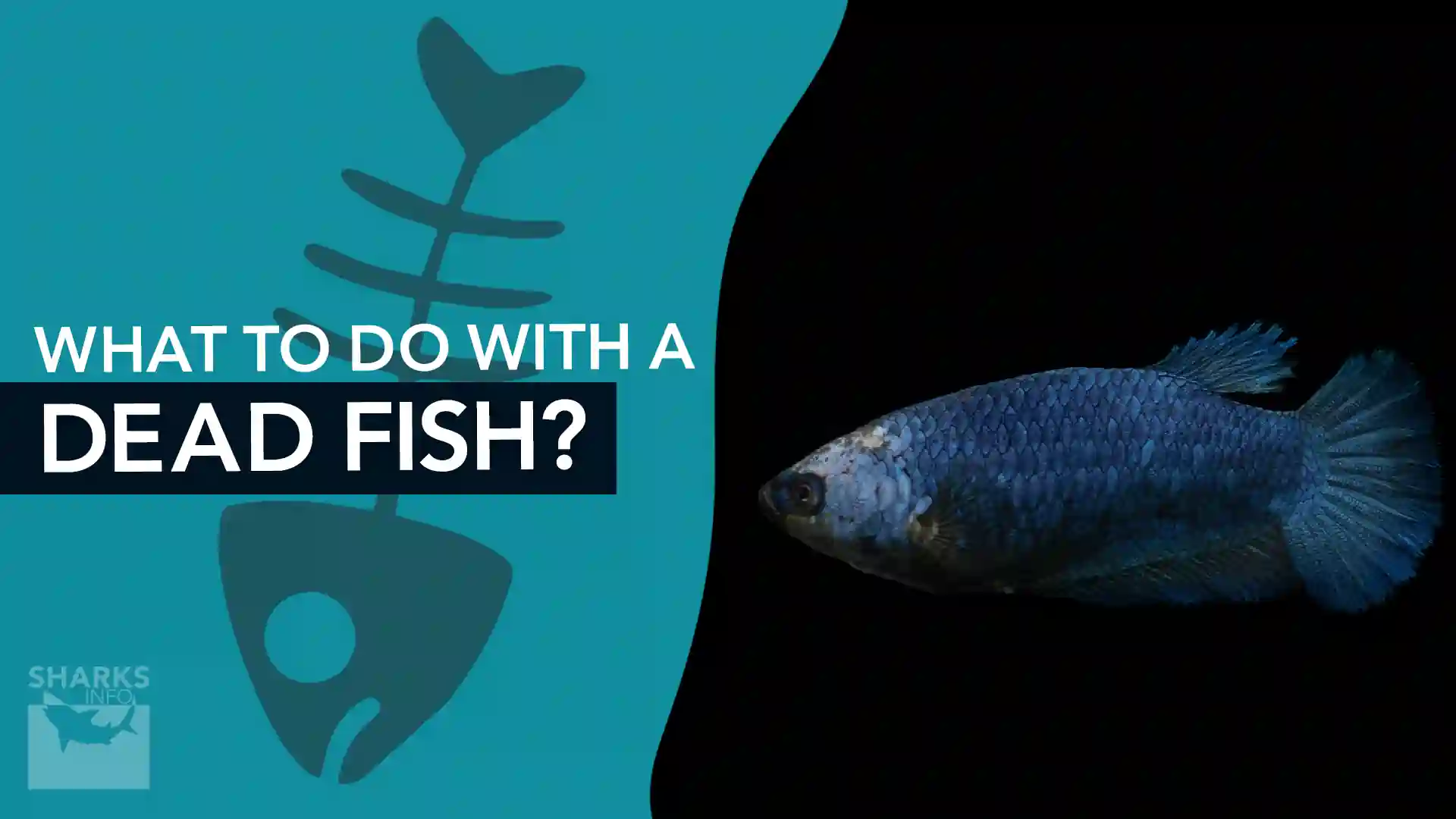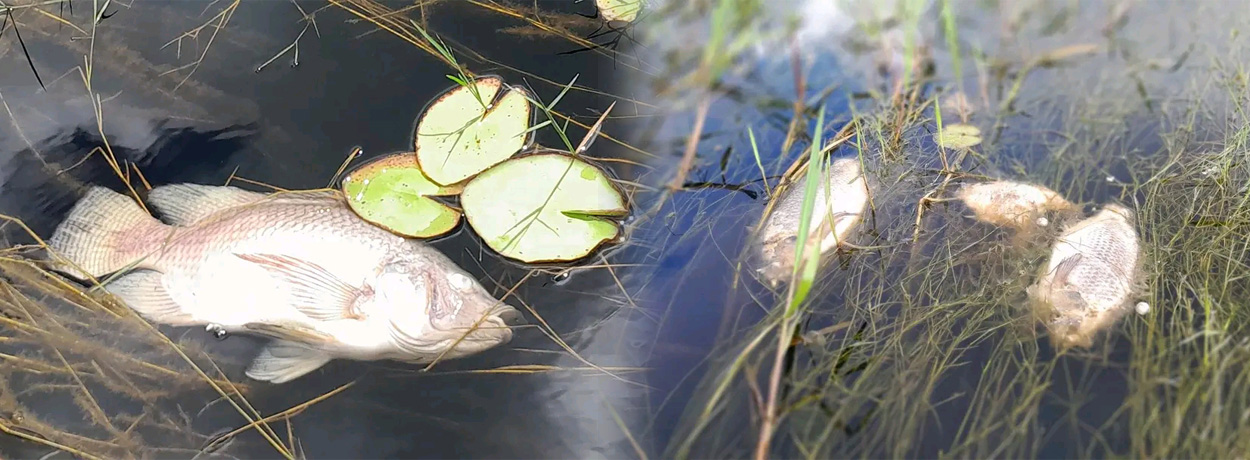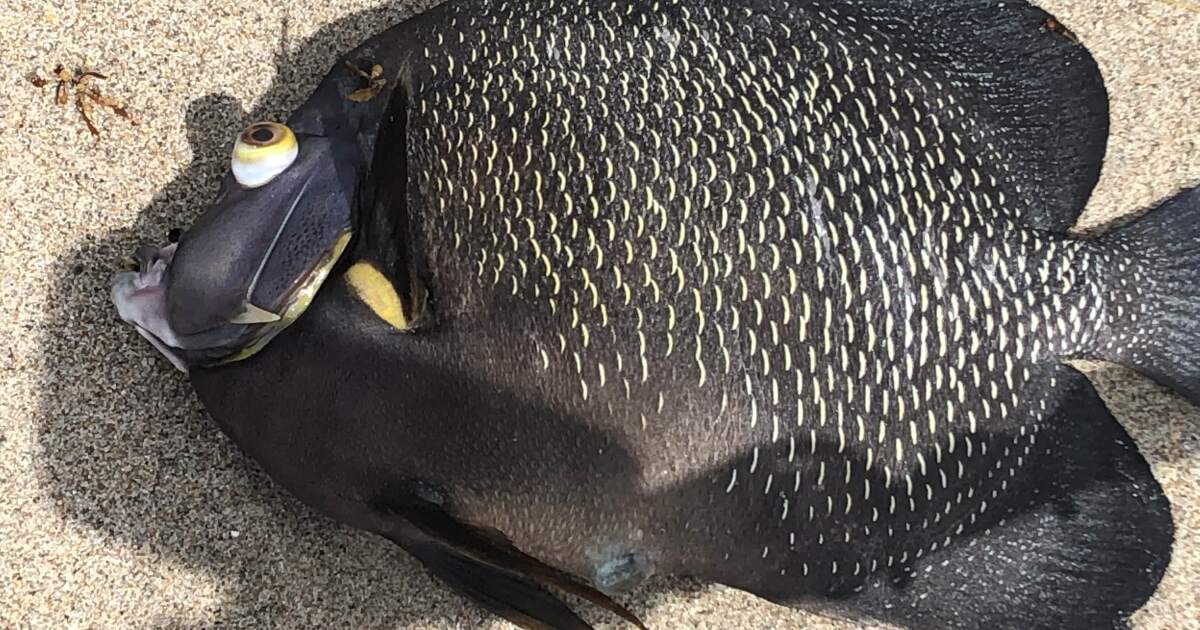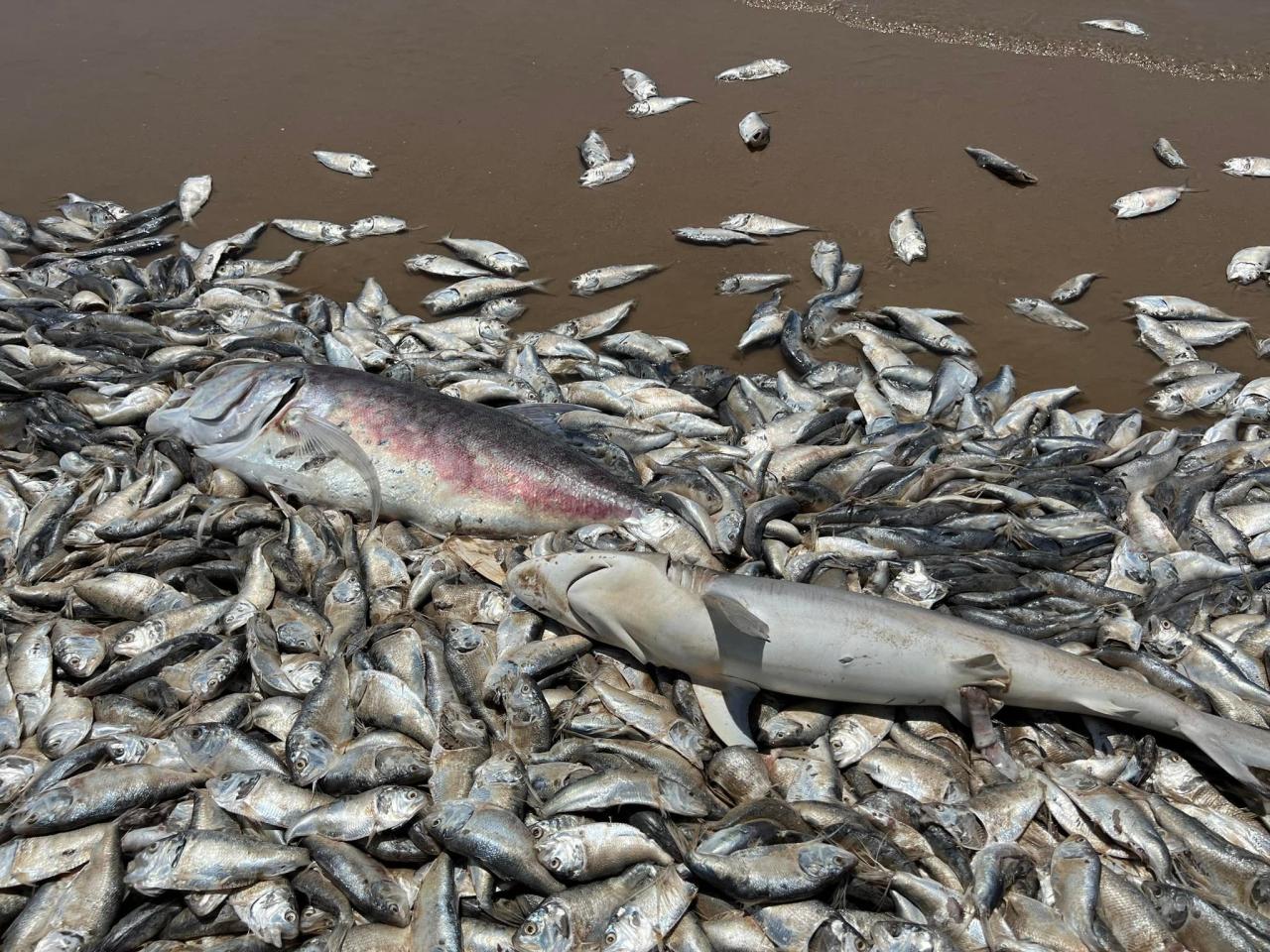Dealing with a dead fish can be upsetting, but understanding the causes and proper disposal methods is crucial for maintaining a healthy aquatic environment. This guide provides a comprehensive overview of identifying the cause of death, safe disposal procedures, preventive measures, and record-keeping strategies to help you effectively manage such situations, both at home and in public settings.
From diagnosing water quality issues to recognizing the symptoms of disease, this guide will equip you with the knowledge to handle these situations with care and sensitivity. Proper disposal techniques and preventative measures will be discussed, ensuring a responsible approach to maintaining the health of your fish and the aquatic ecosystem.
Identifying the Cause of Death

Understanding why a fish has died is crucial for maintaining a healthy aquarium environment and preventing future losses. A thorough investigation, considering potential causes and associated symptoms, can help you pinpoint the problem and take corrective action. This process often involves a combination of observation and careful assessment.Careful examination of the deceased fish and the aquarium environment can reveal clues to the cause of death.
Factors such as water quality, disease, stress, and predation can all contribute to fish mortality.
Potential Causes of Fish Death
Various factors can contribute to a fish’s demise. It is important to consider multiple possibilities rather than jumping to a single conclusion. Comprehensive evaluation is key to effective problem-solving.
- Water Quality Issues: Poor water quality is a frequent culprit in fish deaths. Factors like ammonia spikes, nitrite contamination, and fluctuating temperatures can severely impact fish health. Sudden changes in water parameters can quickly overwhelm a fish’s ability to cope. For example, a power outage leading to a sudden drop in water temperature can cause stress and death in sensitive species.
- Disease: Infectious and non-infectious diseases can cause various symptoms in fish. Infectious diseases are often contagious, potentially affecting the entire aquarium population if not treated promptly. Non-infectious diseases, such as fin rot or fungal infections, can arise from poor water quality or environmental stress. Symptoms can vary depending on the specific disease.
- Stress: Sudden changes in the aquarium environment, such as overcrowding, aggressive tankmates, or inadequate water filtration, can induce stress in fish. This stress can weaken their immune systems, making them more susceptible to disease and other issues. Overstocking the tank, introducing new fish without proper quarantine, or loud noises near the tank are examples of stressors.
- Predation: In community aquariums, larger fish may prey on smaller ones. This can result in sudden deaths, and often the presence of a predator can be inferred from the condition of the dead fish.
Symptoms of Different Causes
Recognizing the symptoms of various causes can help pinpoint the cause of death. Observing the dead fish can often give crucial clues.
- Water Quality Issues: Symptoms related to water quality issues often manifest gradually. Sudden death, without other apparent signs, can be a sign of a rapid increase in harmful substances. This is why regular monitoring of water parameters is essential for fish health.
- Disease: Visible signs of disease include lesions, discoloration, fin rot, fungal infections, and erratic swimming patterns. The appearance of dead fish can vary significantly depending on the specific disease. A fish with a fungal infection may appear covered in white spots.
- Stress: Stressed fish might exhibit lethargy, loss of appetite, and changes in coloration. Their behavior might also become erratic, leading to increased vulnerability to other threats.
- Predation: If predation is suspected, the dead fish might show signs of trauma, such as bite marks or missing fins. The presence of predators in the tank should be considered.
Assessing Water Quality
Regular monitoring of water quality is vital for maintaining a healthy aquarium environment. Key parameters to assess include temperature, pH, and ammonia levels.
| Parameter | Ideal Range | Potential Impact |
|---|---|---|
| Temperature | Specific to fish species | Fluctuations can cause stress and death. |
| pH | Specific to fish species | Variations can harm fish. |
| Ammonia | 0 ppm | High levels are toxic to fish. |
Visual Inspection of the Fish
Visual examination of the fish can provide valuable clues. The fish’s physical condition and behavior before death can offer clues to the cause of death.
- Fin Rot: Look for frayed or disintegrating fins, which can be a symptom of bacterial infection. Fin rot often begins at the tips of the fins and progresses inward.
- Fungal Infections: Fungal infections can cause white or gray spots on the fish’s body. These spots may appear fluffy or raised.
Comparing Dead Fish Appearances
The appearance of a dead fish can vary significantly depending on the cause of death. Detailed observation is key to recognizing potential patterns.
- Water Quality Issues: Dead fish may appear bloated or have discoloration. The fish might exhibit no obvious signs of trauma or disease. This is a general observation, and specific cases may differ.
- Disease: Fish affected by disease may exhibit visible lesions, fin rot, or other signs of infection. The fish’s condition may indicate the specific disease.
- Predation: Bite marks, missing fins, or other signs of trauma can be visible on a fish killed by a predator. The injuries often provide clues about the predator’s size and type.
Proper Disposal Methods

Proper disposal of dead fish is crucial for environmental health and hygiene. Improper disposal can lead to the spread of disease and negatively impact aquatic ecosystems. This section details safe and effective methods for dealing with deceased fish, regardless of the environment in which they are found.Safe disposal practices are essential to prevent the spread of diseases and maintain the health of aquatic environments.
Failing to adhere to proper procedures can have detrimental effects on the surrounding ecosystem and public health.
Home Aquarium Disposal
Properly disposing of a dead fish from a home aquarium requires careful attention to hygiene and safety. A clean plastic bag, preferably sealed, is ideal for containing the fish. Avoid direct contact with bare hands, as this can lead to the spread of pathogens. The bagged fish should then be placed in a sealed container, such as a tightly closed plastic container, for later disposal.
Ensure that the disposal method aligns with local regulations. In many areas, the fish can be placed in a household trash can.
Public Aquarium or Pond Disposal
When a dead fish is found in a public aquarium or pond, immediate action is necessary to maintain cleanliness and prevent the spread of disease. Contact the facility’s management or designated personnel immediately. They are equipped to handle such situations safely and effectively. Allow trained personnel to handle the situation. This ensures appropriate disposal and prevents potential harm.
Wild Fish Disposal
If a dead fish is discovered in a wild environment, a cautious approach is essential. Wear gloves and a mask for protection. Avoid direct contact with the fish. Carefully place the fish in a sealed container, and then dispose of it according to local regulations. In areas where there are wildlife rehabilitation centers, contact them for guidance on the most appropriate disposal methods.
The location and circumstances of the find should be considered when determining the most suitable disposal method.
Environmental Impact of Improper Disposal
Improper disposal of dead fish can lead to several environmental issues. Decomposition of the fish can contaminate water sources, potentially harming aquatic life and disrupting the delicate balance of the ecosystem. This can result in the spread of diseases to other fish and even affect the overall health of the surrounding environment. The presence of dead fish in water bodies can also create unpleasant odors and aesthetically detract from the surrounding environment.
Avoiding improper disposal safeguards the environment.
Disposal Methods in Various Situations
| Situation | Disposal Method |
|---|---|
| Home Aquarium | Place the fish in a sealed plastic bag, then a sealed container for disposal. |
| Public Aquarium/Pond | Contact the facility’s management for proper handling. |
| Wild Fish | Wear protective gear, place the fish in a sealed container, and dispose of it according to local regulations. |
Local Resources for Safe Disposal
Local authorities, wildlife rehabilitation centers, and environmental organizations often provide information and guidance on proper disposal methods. Contact your local environmental agency or search online for resources in your specific area. This will help you understand the specific regulations and best practices for safe disposal in your region. Utilizing these resources will aid in preventing environmental harm and promoting responsible waste management.
- Local Environmental Agency
- Wildlife Rehabilitation Centers
- Local Fish and Wildlife Management
- Online Search (Specific Area)
Preventing Future Fish Deaths

Maintaining the health and well-being of your aquatic pets requires proactive measures to prevent future fish deaths. Understanding the factors that contribute to fish mortality is crucial for responsible fishkeeping. A proactive approach focusing on water quality, filtration, and recognizing stress indicators is key to ensuring the long-term survival of your fish.A well-maintained aquarium environment minimizes the risk of disease and stress, ensuring a thriving ecosystem for your fish.
By diligently following preventative measures, you can create a healthy and supportive environment where your fish flourish and enjoy a longer lifespan.
Maintaining Optimal Water Quality
Maintaining optimal water quality is paramount to preventing fish deaths. Fluctuations in water parameters can quickly compromise fish health, leading to illness and even death. Regular monitoring and adjustments are vital to prevent these issues.Regular water changes are essential for maintaining proper water chemistry. These changes remove accumulated waste products, toxins, and excess nutrients that can accumulate in the tank over time.
The frequency of water changes depends on factors such as the size of the tank, the number of fish, and the filtration system in place. A general guideline is to perform partial water changes (20-30%) weekly or bi-weekly. This helps to maintain a healthy balance of dissolved oxygen, ammonia, nitrite, and nitrate levels.
Importance of Regular Water Testing
Regular water testing is critical for identifying potential problems early. Changes in water parameters can be subtle and often go unnoticed until they reach critical levels. Using a reliable test kit, you can monitor key parameters such as ammonia, nitrite, nitrate, pH, and temperature. Regular testing allows you to detect imbalances promptly and take corrective action before they negatively impact fish health.
By monitoring these parameters, you can proactively address any potential issues and prevent harmful conditions.
Proper Filtration and Aeration
A robust filtration system is vital for maintaining a healthy water environment. Filtration removes solid waste, excess food, and harmful substances from the water, promoting water clarity and preventing the buildup of toxins. Proper filtration also aids in maintaining a balanced ecosystem. Adequate aeration is equally important, as it increases the dissolved oxygen content in the water.
Dissolved oxygen is crucial for fish respiration and overall well-being. A properly functioning filtration system with sufficient aeration will significantly reduce the risk of fish mortality.
Signs of Stress in Fish and Mitigation Strategies
Recognizing the signs of stress in fish is essential for early intervention and prevention of illness or death. Stress can manifest in various ways, including loss of appetite, lethargy, erratic swimming patterns, fin damage, and changes in color or behavior. Proper water quality, a stable environment, and the absence of overcrowding are crucial to mitigate stress. If you observe any of these signs, immediately investigate the potential cause.
Addressing the underlying stressor, whether it’s overcrowding, poor water quality, or aggression from tank mates, is crucial for the well-being of your fish.
Weekly Fish Tank Maintenance Routine
A well-structured weekly maintenance routine is crucial for maintaining a healthy and stable aquarium environment. Consistency is key to preventing issues.
- Daily Checks: Observe fish behavior, water clarity, and any unusual activity.
- Twice-Weekly Water Tests: Test ammonia, nitrite, nitrate, pH, and temperature.
- Partial Water Change (20-30%): Replace a portion of the water with fresh, dechlorinated water.
- Filter Maintenance: Clean or replace filter media as needed to maintain filtration efficiency.
- Food Adjustments: Adjust the amount of food based on fish appetite and avoid overfeeding.
- Tank Cleaning: Remove any debris or uneaten food from the tank bottom.
- Tank Inspection: Look for signs of damage or malfunctioning equipment.
This routine ensures that the aquarium environment remains stable and conducive to the well-being of your fish. Adhering to these steps will minimize the risk of issues and maintain a healthy, thriving aquatic ecosystem.
Recording Observations
Thorough record-keeping is crucial for understanding fish health and identifying patterns in mortality. Accurate documentation allows for targeted interventions and informed decisions regarding aquarium management. By diligently tracking observations, you can pinpoint potential issues and implement preventative measures, thereby enhancing the well-being of your aquatic pets.
Fish Mortality Log Template
Maintaining a detailed log is essential for tracking fish health and potential issues. This template provides a structured approach to document fish mortality events, allowing for analysis and informed decision-making.
This log serves as a central repository for all pertinent information related to your fish. Consistent data collection is vital for identifying patterns and trends, helping you to address any potential problems.
- Date: The precise date of observation.
- Time: The exact time when the observation was made, or when the fish was found dead.
- Location: The specific location within the aquarium where the dead fish was found. This is important to determine if a specific area of the tank might be problematic.
- Fish Species: The name of the fish species, including any distinguishing characteristics.
- Number of Fish Deceased: The exact number of fish that died.
- Symptoms (Pre-Mortem): Any observed signs of illness or stress before the fish died. Examples include lethargy, loss of appetite, unusual swimming patterns, or physical deformities. Be as specific as possible, noting any observations.
- Water Parameters: Measurements of key water parameters, including temperature, ammonia, nitrite, nitrate, and pH. Record these using reliable testing methods.
- Tank Size: The total volume of the tank in gallons or liters.
- Tank Stock: The total number of fish and other aquatic life in the tank.
- Diet: Describe the type and frequency of feeding.
- Other Observations: Any other noteworthy details about the aquarium environment, such as unusual odors or debris. Include any actions taken to address potential problems.
- Cause of Death (Suspected): Based on observations, a preliminary assessment of the likely cause of death. This will be refined as more data is collected.
Categorizing Causes of Death
Proper categorization of potential causes of death is crucial for targeted interventions. This analysis enables you to isolate the root causes of mortality and develop specific preventative strategies.
Precise categorization of causes helps determine the source of the problem, whether it’s disease, poor water quality, stress, or predation. Accurately classifying the cause allows for targeted solutions to address the underlying issue.
| Cause | Symptoms | Water Parameters |
|---|---|---|
| Disease | Lesions, fin rot, erratic swimming, loss of color, clamped fins, ulcerations | High ammonia, nitrite, or nitrate levels; unusual pH |
| Stress | Lethargy, loss of appetite, hiding, erratic swimming patterns, clamped fins | Low oxygen levels, fluctuations in temperature, high levels of waste products |
| Water Quality | Gill damage, rapid breathing, lethargy, loss of appetite, cloudy or foul-smelling water | High ammonia, nitrite, or nitrate levels; fluctuating pH, temperature; low oxygen levels |
| Predation | Missing fins, scales, or body parts; injuries on the body, fish found in unusual locations | N/A |
Illustrative Examples of Dead Fish

Understanding the specific causes of fish death allows for more effective preventative measures and efficient problem-solving. Recognizing the signs of different ailments in dead fish is crucial for accurate diagnosis and appropriate management of the aquarium or pond environment. This section provides detailed examples to aid in identifying common causes of mortality.
Fin Rot
Fin rot is a prevalent bacterial infection that primarily affects the fins and, if left untreated, can spread to other parts of the fish’s body. A dead fish exhibiting fin rot typically shows noticeable damage to the fins. The fins may appear frayed, ragged, or completely eroded, with a loss of their characteristic shape. The affected fins often have a cloudy or discolored appearance.
The body of the fish may also show signs of inflammation or discoloration, especially around the affected fin areas. The fish’s overall condition may worsen, and the body may exhibit signs of secondary infections.
Gill Damage
Gill damage is often associated with poor water quality or parasitic infections. A dead fish with gill damage will display noticeable abnormalities in its gills. The gill filaments may appear pale, swollen, or discolored (e.g., dark red or grayish). The gills may be covered in mucus or exhibit signs of ulceration or erosion. The surrounding tissues of the head and mouth may also show inflammation or discoloration.
The severity of gill damage can range from minor to severe, impacting the fish’s ability to breathe and survive.
Water Quality Issues
Water quality problems are a leading cause of fish mortality. A dead fish affected by poor water quality often shows general signs of stress. The fish’s body may appear bloated, pale, or lethargic. The surrounding water may exhibit signs of high ammonia, nitrite, or nitrate levels, or display unusual odors or colors. The water’s pH level may also be outside the optimal range for the fish species.
In cases of severe water quality issues, the fish’s organs may appear congested or inflamed.
Stress-Related Death
Stress can weaken a fish’s immune system, making it susceptible to diseases. Before death, a stressed fish may exhibit a variety of behavioral and physical changes. Behavioral changes might include loss of appetite, lethargy, hiding in the tank’s corners, or erratic swimming patterns. The fish’s body may appear thin or emaciated. Physical signs may include loss of scales, discoloration, or injuries.
A fish’s stress response is influenced by factors such as overcrowding, water changes, and sudden temperature fluctuations.
Healthy Fish Example
A healthy fish, for comparative purposes, should exhibit vibrant coloration consistent with its species, clear and firm scales, and active swimming behavior. Its fins should be fully intact and unblemished. The gills should appear bright red or pink, and the fish should be alert and responsive to its environment. This healthy specimen serves as a benchmark for assessing the overall condition of fish in an aquarium or pond.
Final Summary

In summary, this guide offers a practical approach to handling dead fish, emphasizing responsible care for both individual fish and the broader aquatic environment. By understanding the causes of death, implementing proper disposal methods, and taking preventative measures, you can ensure the well-being of your aquatic companions and maintain a healthy and thriving ecosystem.